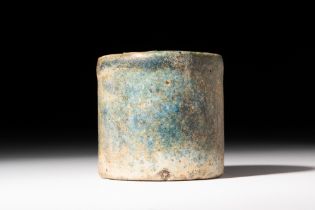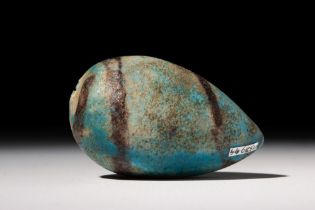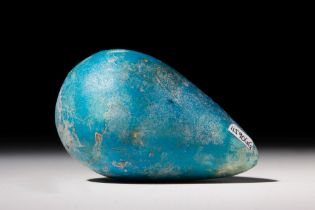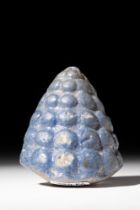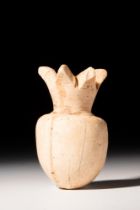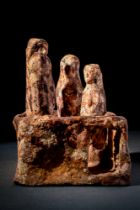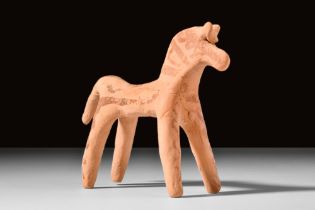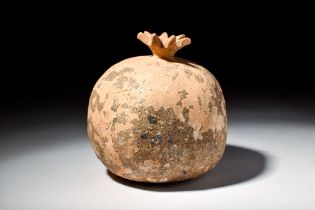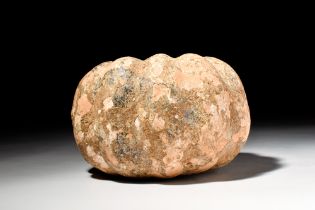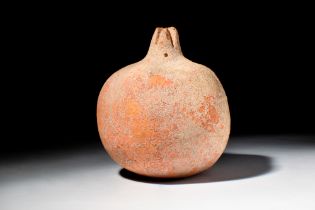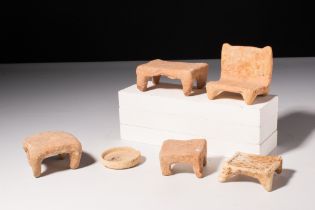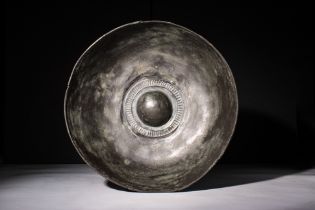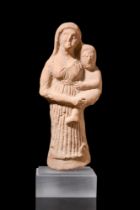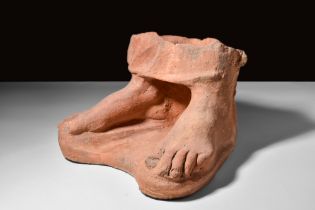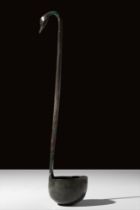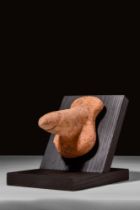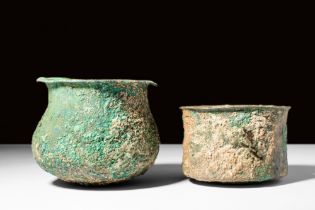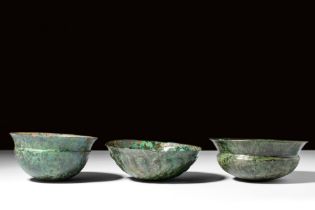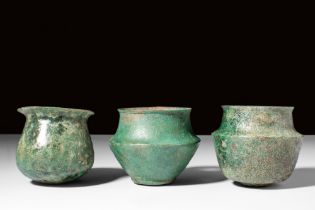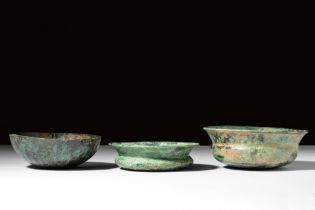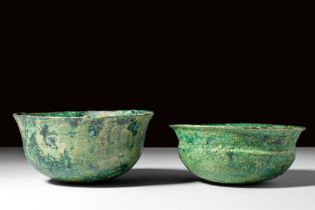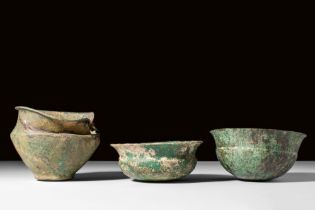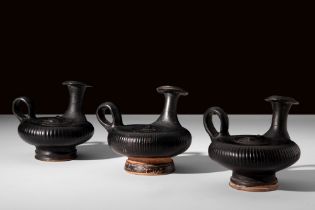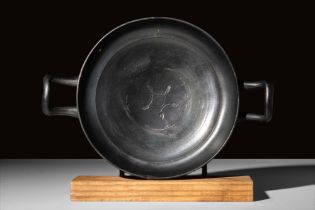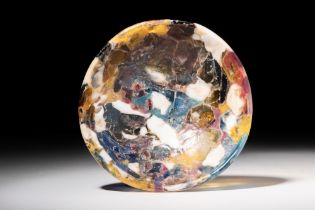Refine your search
Estimate
Category
- Jewellery (154)
- Greek, Roman, Egyptian & other antiquities (112)
- Collectables (41)
- Glassware (38)
- Arms, Armour & Militaria (29)
- Sculpture (28)
- Ceramics (21)
- Chinese Works of Art (20)
- Salvage & Architectural Antiques (19)
- Clocks (18)
- Metalware (12)
- Porcelain (11)
- Islamic Works of Art (8)
- Books, Manuscripts & Periodicals (7)
- Coins (5)
- Silver & Silver-plated items (5)
- Kitchenalia (4)
- Taxidermy & Natural History (3)
- Vintage Fashion (3)
- Furniture (2)
- Oil, Acrylic paintings & Mixed Media (2)
- Russian Works of Art (2)
- Scientific Instruments (2)
- Textiles (2)
- Tools (2)
- Cameras & Camera Equipment (1)
- Classic Cars, Motorcycles & Automobilia (1)
- Ethnographica & tribal art (1)
- Indian Works of Art (1)
- Musical Instruments & Memorabilia (1)
- Sporting Memorabilia & Equipment (1)
- Stamps (1)
- Watches & Watch accessories (1)
Creator / Brand
Item Type
- Ring (106)
- Gold Ring (64)
- Intaglio (45)
- Necklaces, Pendants & Medallions (38)
- Bowl (26)
- Pendant (24)
- Band (23)
- Necklace (22)
- Beads (20)
- Earrings (18)
- Bottle (15)
- Flask (15)
- Amulet (14)
- Glass Bottle (12)
- Silver Ring (12)
- Jar (11)
- Vessel (11)
- Gold Pendant (10)
- Axe (9)
- Cup (9)
- Garnet (8)
- Scarab (8)
- Bracelet (7)
- Helmet (7)
- Sword (7)
- Vase (7)
- Chain (6)
- Pin (6)
- Signet Ring (6)
- Krater (5)
- Letter (5)
- Pearls (5)
- Round (5)
- Brooch (4)
- Ceramic Cup (4)
- Chinese Art by Period / Style (4)
- Dagger (4)
- Dish (4)
- Ceramic Bowl (3)
- Column (3)
- Figure (3)
- Jewellery Brands (3)
- Lamp (3)
- Mace (3)
- Ornament (3)
- Ruby (3)
- Sculpture (3)
- Turquoise (3)
- 19th-21st Century Art (2)
- Armour (2)
- Battle Axe (2)
- Cameo (2)
- Ceramic Dish (2)
- Ceramic Mug (2)
- Chinese Bowl (2)
- Cuirass (2)
- Drinking Cup (2)
- Emerald (2)
- Fragment (2)
- Gemstone (2)
- Kantharos (2)
- Longsword� (2)
- Mask (2)
- Model (2)
- Mug (2)
- Patera (2)
- Plaque (2)
- Porcelain (2)
- Shabti (2)
- Shield (2)
- Spatha (2)
- Spear (2)
- Statuette (2)
- Table (2)
- Tableware (2)
- Tile (2)
- Ushabti (2)
- Adze (1)
- Arch (1)
- Beaker (1)
- Bed (1)
- Brooches (1)
- Bust (1)
- Button (1)
- Candlestick (1)
- Ceramic Jug (1)
- Ceramic Tile (1)
- Ceramic Vase (1)
- Chinese Porcelain (1)
- Cups (1)
- Curtain (1)
- Earring (1)
- Façade (1)
- Figurine (1)
- Finial (1)
- Fire Grate (1)
- Glass Beaker (1)
- Glass Bowl (1)
- Glass Candlestick (1)
- Glass Vase (1)
- Glasses (1)
- Hand Mirror (1)
- Intaglio Ring (1)
- Islamic Art by Period / Style (1)
- Jug (1)
- Knife (1)
- Knives (1)
- Kyathos (1)
- Medallion (1)
- Metal Cup (1)
- Miniature Furniture (1)
- Mirror (1)
- Plate (1)
- Plumb Bob (1)
- Porcelain Vase (1)
- Programme (1)
- Robe (1)
- Seating (1)
- Silver Bracelet (1)
- Skyphos (1)
- Spoon (1)
- Stele (1)
- Stool (1)
- Tunic (1)
- Utensil (1)
- incense burner (1)
- List
- Grid
A subscription to the Price Guide is required to view results for auctions ten days or older. Click here for more information
New Kingdom, 18th Dynasty, Ca. 1550 - 1295 BC .A green and yellow faience inlay in the form of a blue lotus or lily flower (Nymphaea caerulea). Fo...
EGYPTIAN FAIENCE INLAY
New Kingdom, 19th Dynasty, Reign of Rameses III, Ca. 1184 - 1153 BC .A faience tile inlay with ivory coloured pattern of petals on blue slate back...
Old Kingdom, Ca. 2630 - 2611 BC .A set of three faience wall tiles, the left one is a famous type found on the walls of King Djosers step pyramid ...
New Kingdom, Ca. 1550 - 1070 BC . A set of two inlays displaying a vibrant cobalt blue glaze. The inlays feature a cylindrical shape with smooth, ...
Graeco-Roman, Ca. AD 31 BC - 395 . A faience votive model or incense burner in the form of a column with conical shape and centre piercing hole. F...
EGYPTIAN BRONZE EYE INLAY
Third Intermediate Period to Late Dynastic Period, Ca. 1070 - 343 BC.An eye inlay from an anthropoid coffin, the interior originally inlaid with w...
New Kingdom, Ramesside Period, Ca. 1550 - 1186 BC.A turquoise coloured wig inlay from a composite figure, decorated in corkscrew locks. For a simi...
EGYPTIAN BASALT NEW KINGDOM BOWL
New Kingdom, Ca. 1550 - 1070 BC.A bowl with a globular thick-walled shouldered body, tapering to a flat ring base, with a short rim. For a similar...
Middle Kingdom, Ca. 2055 - 1773 BC.A hollow dark green glazed faience egg-shaped ball, perhaps a model of a fig. For additional information, see H...
Middle Kingdom, Ca. 2055 - 1773 BC.A hollow dark green glazed faience egg-shaped ball, perhaps a model of a fig. For additional information, see N...
New Kingdom, Ca. 1550 - 1069 BC.An example of a moulded pendant grape cluster. The piercing at the top would allow attachment to a egister of faie...
New Kingdom, Ca. 1550 - 1069 BC.A deep blue faience inlay of a cluster of grapes; This form of grape cluster were used as architectural ornaments ...
EGYPTIAN ALABASTER VESSEL
New Kingdom, Ca. 1550-1070 BC.A vessel crafted from alabaster of a short cylindrical form and circular, flat base. The wide mouth of the vessel is...
New Kingdom, Ca. 1295 - 1069 BC.A bottle, in the shape of a pomegranate, the exact purpose of which is unknown but it may have stored precious liq...
Ca. 600 - 200 BC.A gathering of four mold-made terracotta votive figurines of different sizes, representing Tanit. She was the Phoenician goddess ...
BOEOTIAN TERRACOTTA HORSE
Ca. early 6th century BC.A charming terracotta horse with simplified features, depicted in a standing pose on four long legs, with its neck stretc...
GREEK HELLENISTIC TERRACOTTA JUG
Ca. 200 BC.An orangeware pottery handled jug, showing a wide angular shoulder, tapered bulbous body and applied angular ribbed handle. Earthly enc...
DAUNIAN POTTERY FUNNEL KRATER
Ca. 4th century BC.A pottery krater featuring a wide funnel mouth decorated with festoon, projecting handles and flanges. Its body is further enri...
Ca. late 4th to 2nd century BC.A mould-made ceramic votive figure of rare form, featuring a man holding the arm of a small child standing beside h...
PARTHIAN TERRACOTTA HORSEMAN
Ca. 2nd century BC.A terracotta figurine of a horseman. The rider is depicted with arms extended forward, grasping the horse's upright neck, while...
EASTERN GREEK TERRACOTTA MARROWS
Ca. 450 BC.A pair of terracotta model food offerings in the shape of marrows. This pair were likely votive dedications, possibly part of a basket ...
Hellenistic, 300 - 100 BC.A votive offering moulded from terracotta in the shape of a pomegranate which has been cut open into two halves. This Te...
Eastern Greek, Ca. 400 BC.A naturalistic sculptural rendering of a pomegranate with a characteristically globular form, a fluted bud atop, and a p...
GREEK TERRACOTTA VOTIVE PUMPKIN
Eastern Greek, Ca. 400 BC.A naturalistic sculptural rendering of a pumpkin with a characteristically globular form, a fluted bud atop, and a point...
EASTERN GREEK TERRACOTTA MARROWS
Ca. 450 BC.A terracotta model food offering in the shape of a marrow, possibly part of a basket model which could have contained various fruits in...
Eastern Greek, Ca. 400 BC.A naturalistic sculptural rendering of a pomegranate with a characteristically globular form, a fluted bud atop, and a p...
Ca. 400 BC.A group of terracotta offerings in the form of a bed and four stools. Terracotta models of furniture, such as beds, stools and tables, ...
ORNAMENTED SCYTHIAN SILVER BOWL
Ca. 5th-3rd Century BC.A decorative Greco-Skythian bowl made from thin silver. The outside of the bowl is decorated with images of necks and heads...
Ca. 600 BC.A hollow terracotta figure of a mother goddess holding a child in her arms. The goddess is depicted wearing a belted robe with a V-neck...
ETRUSCAN IMPASTO VESSEL
Ca. 7th century BC.A pottery stamnos with a large bulbous body gently tapering to its flat, circular base. At the rounded shoulder, a pair of uptu...
Ca. 3rd-2nd century BC.A near life-size, naturalistically modelled pair of feet with an integral base and a lower section of a robe. Likely a frag...
LARGE ETRUSCAN BUCCHERO KYATHOS
Etruria, Ca. 6th-5th century BC.An unusually large blackware pottery drinking cup with flared bowl body, high looping strap handle with flare-eare...
Ca. 500 BC.A rare simpulum (ladle) crafted in bronze, showcases a deep, round bowl paired with an elongated, flat handle gracefully curved at the ...
Ca. 6th-5th century BC.A black-glazed pottery baluster form vessel, presenting an ancient piece of lead adhered to the base. Decorated with faint ...
Ca. 3rd-2nd century BC.A pottery votive model of a phallus, naturalistically moulded with outlined foreskin. Comes with a custom-made stand. For a...
PAIR OF ETRUSCAN BRONZE VESSELS
Ca. 5th century BC.A pair of bronze vessels, comprising one with a bulbous lower body, a tubular neck, and a flat everted rim, and another featuri...
Ca. 5th century BC.A group of three bronze vessels, consisting of two with spherical lower bodies and flaring flanges, and one featuring a hemisph...
Ca. 5th century BC.A group of three bronze vessels, comprising one with a deep body characterised by a rounded lower section and walls gently tape...
Ca. 5th century BC.A group of three bronze bowls, comprising one with a hemispherical body, while another is flat-bottomed with a broad flange and...
PAIR OF ETRUSCAN BRONZE VESSELS
Ca. 5th century BC.A pair of bronze vessels including a bowl with a round bottom, and a flaring profile. The second bowl, shallower in depth, boas...
Ca. 5th century BC.A group of three bronze vessels showcasing the diverse forms in ancient Etruscan craftsmanship. The first bowl rises from a fla...
Ca. 500 BC.A group of bronze utensils consisting of a flat-bottomed olpe with a thick rim and a long downfacing handle, a cooking vessel with shar...
Magna Graecia, Ca. 350 BC.A pottery amphora featuring a bail-type handle with an applied attachment loop at the top centre. Black glazed neck, lip...
ATTIC RED FIGURE OWL SKYPHOS
Ca. 5th century BC.A red-figure skyphos, characterised by a base ring supporting a deep cup with two horizontally positioned handles opposite each...
Ca. 4th century BC.A nice group of three terracotta gutti, adorned with a lustrous black glaze. Each vessel features a squat and globular body, ad...
Ca. 350 BC.A set of three vessels belonging to the Xenon ware, comprising two oinochoi and a kantharos. The oinochoi feature inverted piriform bod...
Ca. 450 BC.A group of three black glazed cups, each with a well-proportioned, bulbous body, gradually tapering to a base, while the short neck fla...
Ca. 450 BC.A group of three distinctive Attic black-glazed vessels including: a trefoil oinochoe, standing on a ring base and showcasing a body ad...
Ca. 350-300 BC.A glazed wheel-thrown thistle mug with a petite tiered foot, a bulbous body that tapers to a wide neck with flared rim, and an appl...
Ca. 4th century BC.A group of three pottery Gnathian-ware vessels, exemplifying the characteristic black glaze covering the majority of each item,...
Ca. 4th century BC.A black-glazed pottery oinochoe with an inverted bell-shaped body with vertical ribbing adorning the shoulder. The vessel rests...
Ca. 400-300 BC.A stemless terracotta kylix covered in a rich black gloss. The large, shallow body rests on a low concave foot, revealing the natur...
Ca. 400-350 BC. A group of five black-glazed pottery dishes, each with a broad and shallow body that rises gracefully from a low concave foot. Its...
Ca. 4th century BC.A superb blackware dish of shallow circular form, standing on a raised foot. The vessel is decorated with a pink-painted swan w...
ROMAN GLASS MOSAIC BOWL
Ca. 100 BC - AD 100 .A shallow segmental bowl fashioned from a composite mosaic pattern formed from polygonal sections of monchrome canes in diffe...
Ca. 340-320 BC.A black-glazed terracotta kantharos, characterised by a deep cup with a gradual taper towards the base. Positioned atop a stem foot...
Ca. 340-325 BC.A pair of pottery lekanides, each comprising two components: the lower portion of a footed bowl adorned with a sleek black glaze, a...
Ca. 340-325 BC.A terracotta red-figure lekanis consisting of a black-glazed footed dish with two opposing handles. The lid is adorned with two fem...
Ca. 3rd century AD.A pair of redware amphoriskoi, crafted through a wheel-throwing technique. Each vessel features a concave footed base supportin...
ROMAN REDWARE TWO-HANDLED FLASK
Ca. 4th century AD.A red slip pottery two-handled flask with a globular body sprigged with a gladiator and leopard to one side and a nude figure, ...






